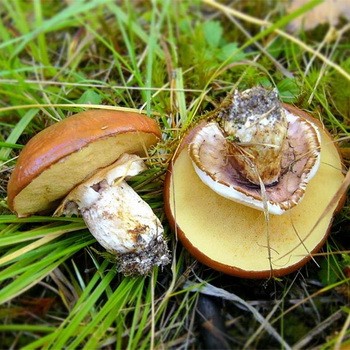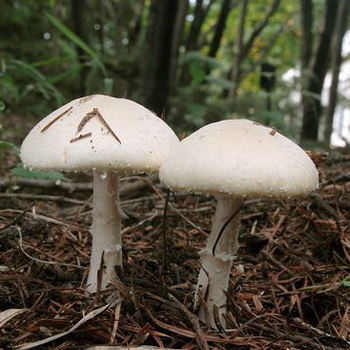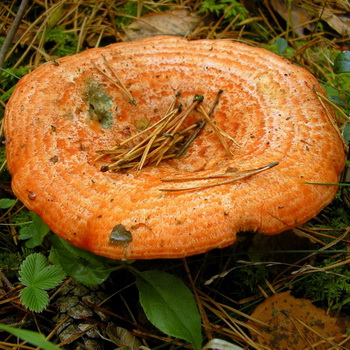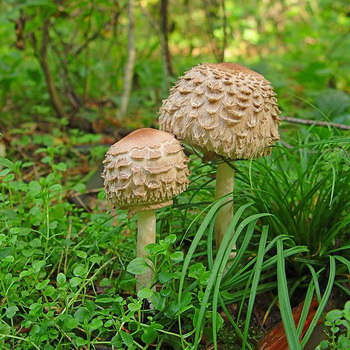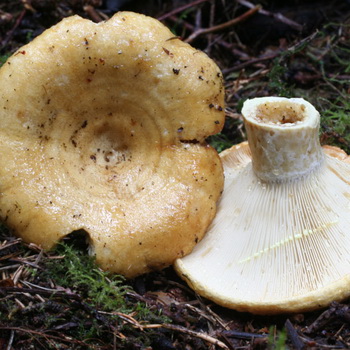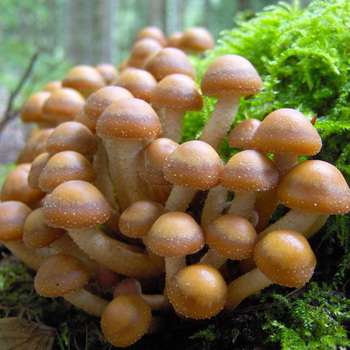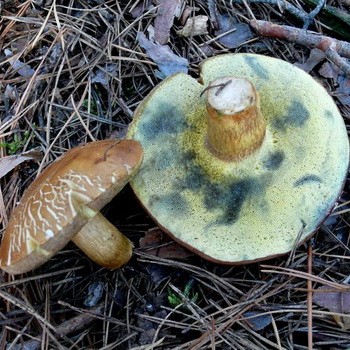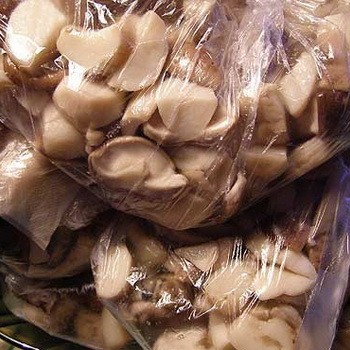Maslata - edible mushrooms: photo, description
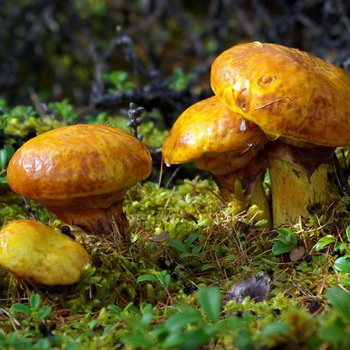
In this article, you can familiarize yourself with the most common types of butter mushrooms (common, granular, larch and others), see how the butter mushrooms look in the photo, and learn how to distinguish the butter dish from doubles.
Content
What common mushrooms look like: photo and description of the species
Category: edible.
Hat oiler (Suillus luteus) (diameter 4-16 cm): from brown-chocolate to gray-olive or yellow-brown. The young mushroom has the shape of a hemisphere, which then changes to almost open. The edges are sometimes raised. The mucous skin is easily separated from the pulp.
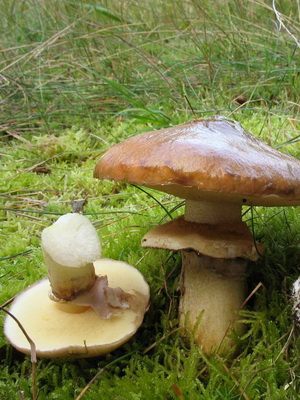
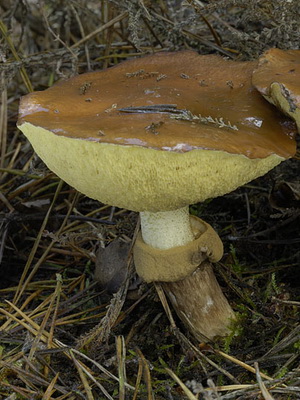
Pay attention to the photo of this type of oil: leg (height 4-12 cm) is usually lighter than the hat, often with a dirty yellow tint. Solid and fibrous, has the shape of a cylinder and a white membranous ring.
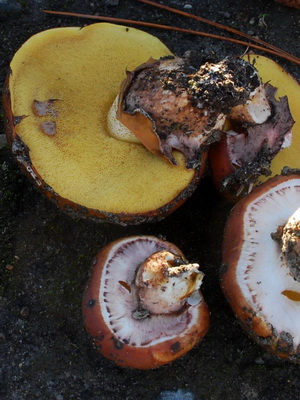
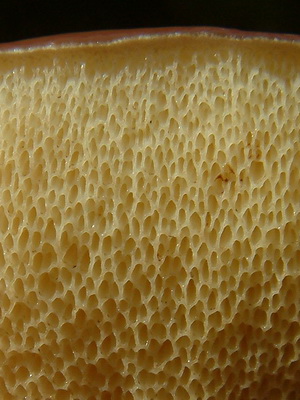
Tubular layer: the pores are small and rounded, light yellow or whitish.
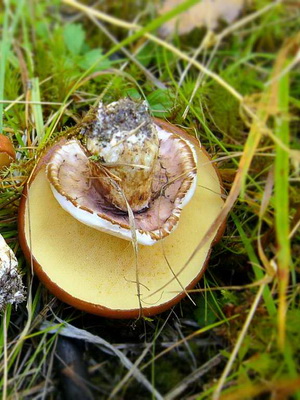
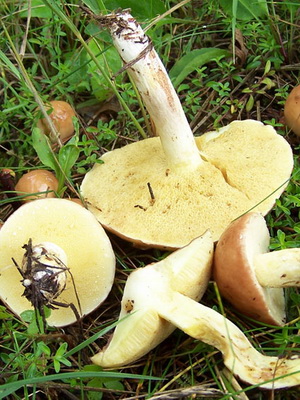
The pulp of the oily mushrooms is juicy, from brownish at the base to light yellow in the upper part and brownish under the hat itself.
Common butterflies are often damaged by worms and other pests. The number of unfit mushrooms in one locality can reach 80%.
When growing: from mid-September to the end of October in Europe, in Mexico and on the islands located next to it.
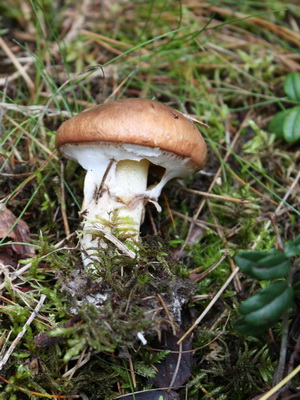
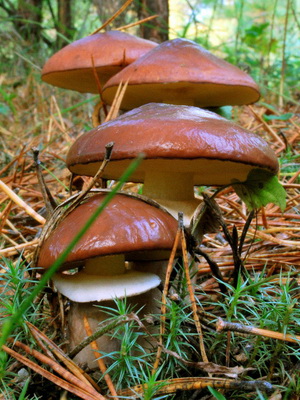
Where can I find: on sandy soil of all types of forests, especially near pines, birches and oaks. Often you can find it in open clearings or meadows, less often in mountainous and rocky areas. Common butterflies often grow next to greenfinch, honey agarics, chanterelles and noble boletus.
Eating: in almost any form, provided that the skin is removed from the cap. In terms of protein content, common oils are ahead of porcini mushrooms. People prone to allergic reactions should use oil with great care, as these mushrooms can be the strongest allergen.
Application in traditional medicine (data not confirmed and not passed clinical trials!): in the form of a decoction for the treatment of gout.
Other names: oiler, late oiler, oiler yellow, oiler, real.
Yellow-brown variety of butter and their photo
Category: edible.
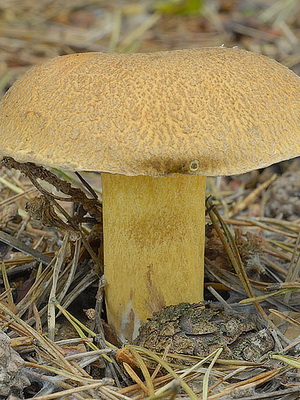
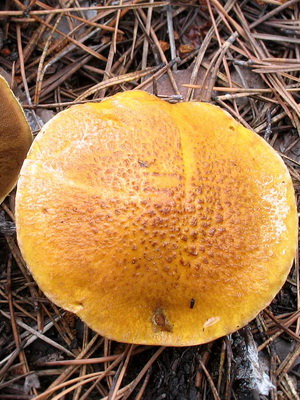
Hat of yellow-brown oil (Suillus variegatus) (diameter 5-12 cm): brown, olive, yellow or dirty orange, sometimes with fibrous scales. The semicircular shape changes over time to almost flat. The peel is separated only with pieces of pulp.
Leg (height 4-11 cm): from lemon to orange, thick and smooth, cylindrical in shape.
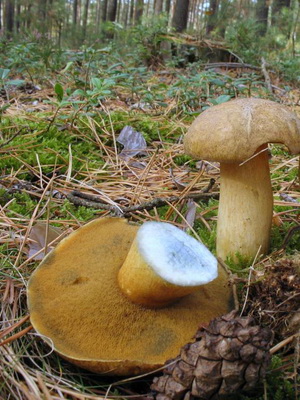
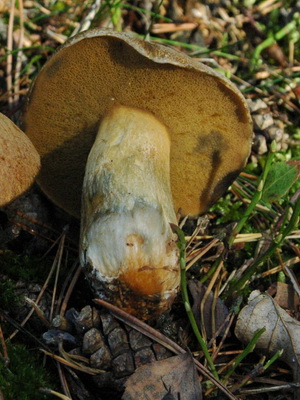
As can be seen in the photo, the yellow-brown oils, their flesh is orange or yellow, acquires a blue or purple color when cut and when interacting with air. Young yellow-brown oils have a pine-coniferous smell and taste. The taste of old mushrooms is similar to metallic.
Doubles: are absent.
When growing: from mid-July to early October in countries of both hemispheres with a temperate climate.
Where can I find: on sandy and relatively dry soils of coniferous or mixed forests. Usually adjacent to pine trees.
Eating: in almost any form. No pretreatment required.
Application in traditional medicine: not applicable.
Other names: pestle, swamp, butterdish motley, butterdish swamp, butterdish sand. All these names clearly demonstrate what an oiler looks like - this mushroom is bright, often with an abundance of yellow shades.
Grain nipple and type photo
Category: edible.
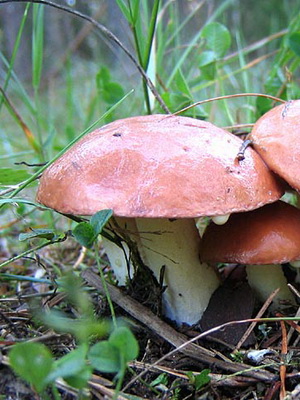

The cap of this type of oiler (diameter 4-14 cm): ocherous, brownish or dark yellow, slightly convex or flat. To the touch, the cap of Suillus granulatus is slightly sticky or oily, the skin is easily removed. According to its description, the oily granular is similar to the yellow-brown variety, but has a faded color.
This type of oil has a solid, dense leg of cylindrical shape, without a ring. Its height is from 3 to 10 cm. The leg is much lighter than the hat - white or yellow.
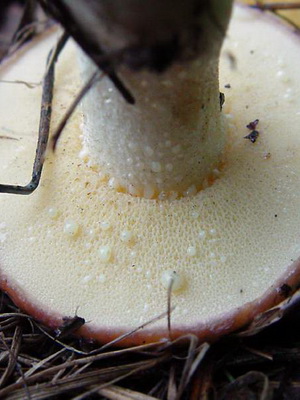
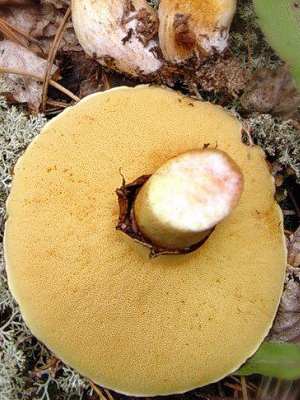
Pay attention to the photo of a granular oiler: its tubular layer is covered with small and large, slightly yellowish pores.
Pulp: fleshy, light brown in color, which does not change at the cut.
Doubles: cedar oil (Suillus plorans) and non-ringed (Suillus collinitus). But cedar trees grow exclusively under five-coniferous pines (that is, those with five needles in a bunch) - Siberian and Japanese white, and the non-ringed hat is darker, and at the very base of their legs there is a pinkish bloom.
When growing: from mid-June to early November in temperate countries of the Eurasian continent.
Where can I find: grainy oiler grows on sandy soils and in lighted areas of young coniferous forests.
Eating: in almost any form, provided that the peel is removed from the cap - it will be easier to remove if you first hold the mushroom for several minutes in boiling water.
Application in traditional medicine: not applicable.
Other names: oiler early, oiler summer.
Larch oiler: photo and description
Category: edible.

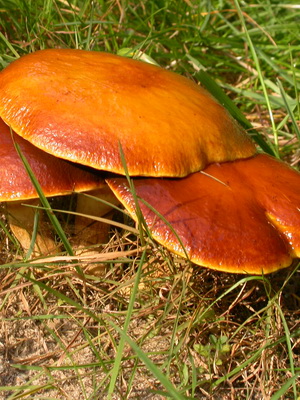
Hat larch oiler (Suillus grevillei) (diameter 1.5-3 cm): from yellow and lemon gold to brown or brown. In young mushrooms, it is slightly convex, then changes its shape to almost open. To the touch a little sticky, without cracks or tubercles. The peel is removed only with pieces of pulp.
Leg (height 3-13 cm): thick and solid, shaped like a cylinder or mace. The color is usually almost the same as the hat. There is a lemon-colored ring.
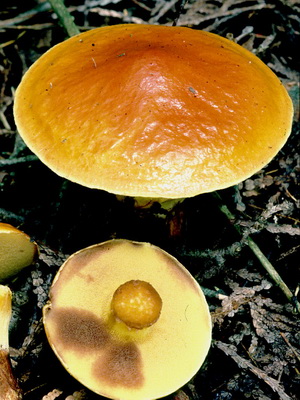
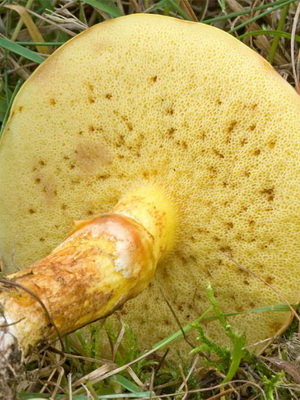
If you carefully look at the photo of the larch oiler, you will notice round yellow pores on the tubular layer, darkening with mild pressure.
Pulp: juicy and fibrous. Brown or light yellow color does not change when breaking and interacting with air.
Doubles: rare oily gray (Suillus aeruginascens) and rusty red (Suillus tridentinus). The gray oils have duller hats and legs, while rusty red ones grow only in Western Siberia and have fibrous scales on the hat.
When growing: from the beginning of July to the end of September, practically throughout Russia (except for the southern regions), as well as in Europe and North America.
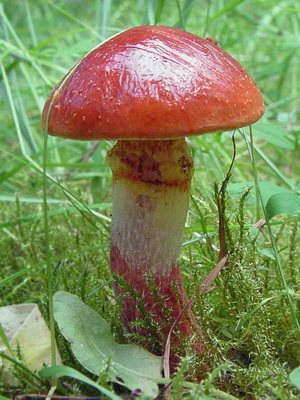
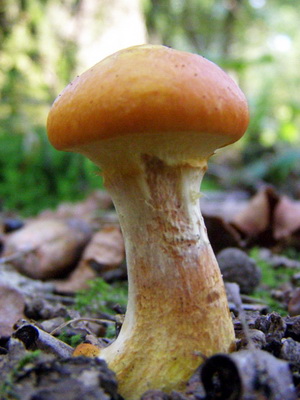
Look at the photo of the oiler mushroom in its natural habitat - it can most often be found next to larch trees.
Eating: in almost any form, subject to preliminary boiling and peeling. This mushroom is especially delicious pickled.
Application in traditional medicine (data not confirmed and not passed clinical trials!): as a good treatment for gout.
Oiler white: photos and doubles
Category: conditionally edible.
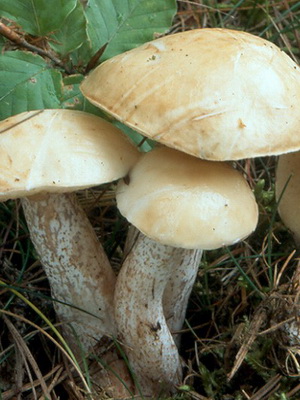
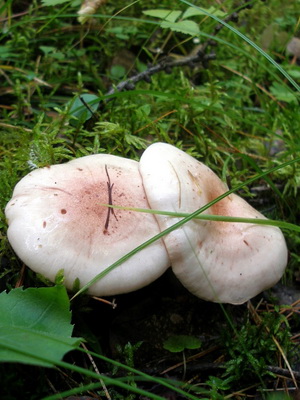
White oiler hat (diameter 6-15 cm): in very humid weather it can become olive. Convex in shape, almost flat in old mushrooms. The touch is smooth, without wrinkles and cracks, a little slippery. The peel is easily removable. The edges are yellowish or with a gray tint.Leg (height 4-11 cm): white, cylindrical, without a ring.
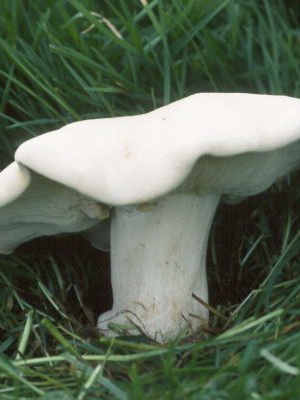
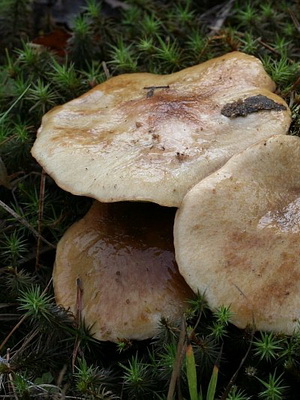
As can be seen in the photo of the white oiler, the hat is always solid, without hollow sections, sometimes strongly curved. In adult mushrooms, often with lilac or brown warts.
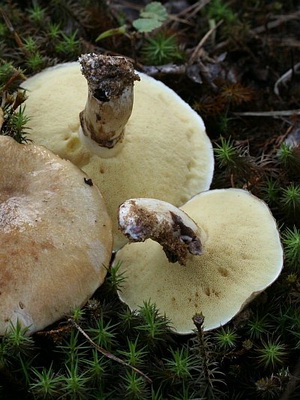
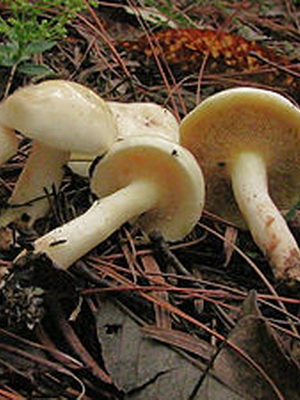
Photo and description of the pulp. The oil of this species is similar to the yellow-brown variety: it is just as dense, yellowish, it turns red when breaking and interacting with air. It does not have a pronounced smell and taste, so the mushroom is considered to be of low quality.
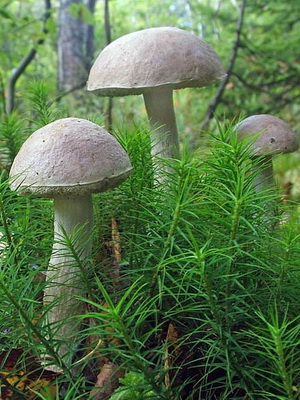
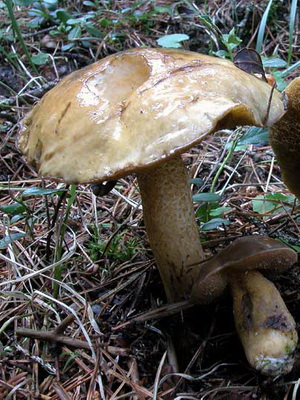
Doubles oiler white: marsh boletus (Leccinum holopus), cedar oil (Suillus plorans) and Siberian (Suillus sibiricus). All three mushrooms are similar in appearance to a white oiler only at a young age. In the future, the cap of the cap boletus acquires a greenish tint, and the oil is darker.
When it grows: from the beginning of August to the end of September in Siberia and the Far East, China, North America and European countries bordering the Alps.
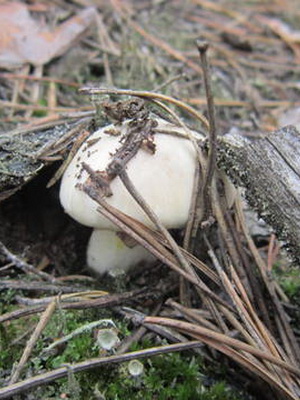
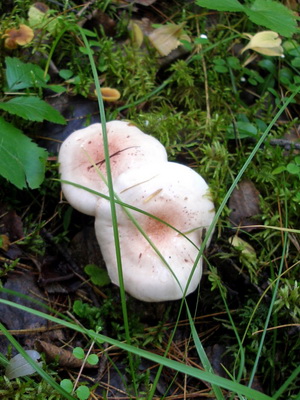
Where can I find: in coniferous and mixed forests, usually near pines and cedars.
Eating: in salted and pickled form. Only young mushrooms are used in cooking, which should be processed no later than 3-4 hours after harvest.
Application in traditional medicine: not applicable.
Other names: butterdish is pale, butterdish is soft.
